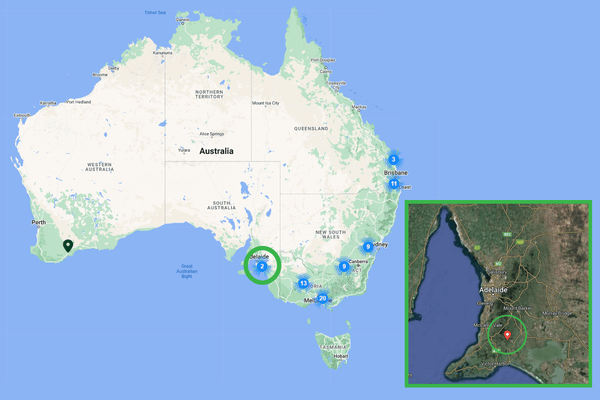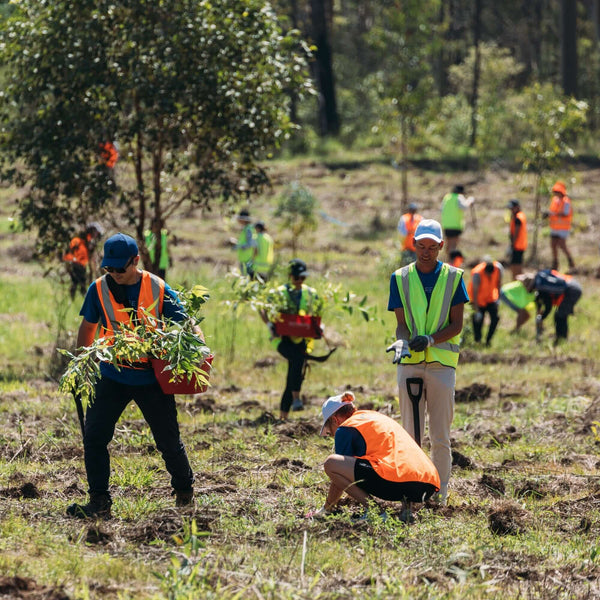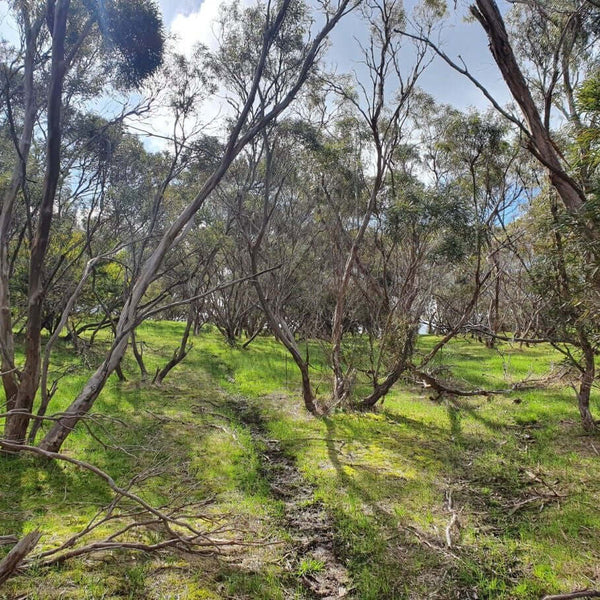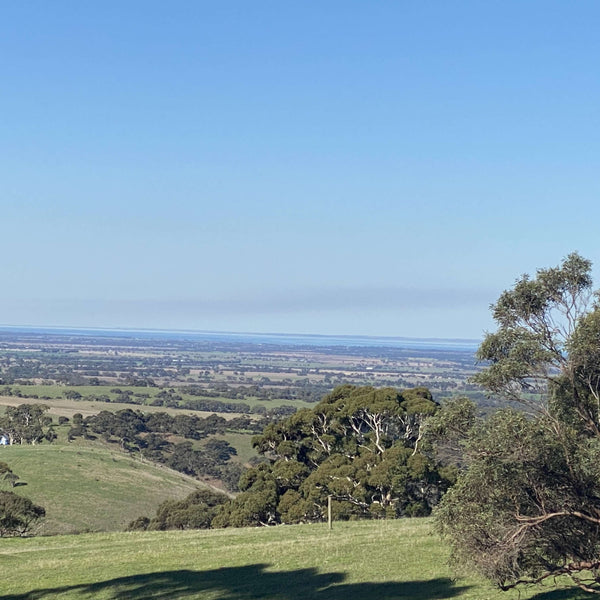Restoring Ecosystems In South Australia For Native Animal And Birdlife Habitat
Located on the lands of the Ngarrindjeri people, the project at Bull Creek is restoring critically endangered ecosystems south of Adelaide.
In 2023, Greenfleet restored 14 hectares of this property with locally native plants species, creating habitat for rare and endangered wildlife that call these ecosystems home. This includes the endangered Southern brown bandicoot, the critically endangered Southern Emu-wren and the vulnerable yellow-footed antechinus.

Location And Map
This property is located an hour south of Adelaide in South Australia. Located near remnant native vegetation, the restoration of this property will provide further wildlife habitat and conservation opportunities in the area.
Greenfleet has over 550 legally protected forests growing in Australia and New Zealand, including other forests in South Australia. You can explore some of our other projects via our interactive map here.

Species Selection & Revegetation Approach
The focus of the restoration work at Bull Creek is restoring two endangered ecosystems; peppermint box grassy woodland and Kangaroo Island narrow-leaved mallee. To do this, 30 different locally native species were restored across the site.
The native species mix is made up of multiple eucalypt, tea-tree and wattle species. These include black paperbark (Melaleuca lanceolata), varnish wattle (Acacia verniciflua) and pink gum (Eucalyptus fasciculosa). Pink gums can grow up to 15 metres in height and flower with pale pink buds between March and December.
In 2023, 2024 and 2025, groups of Greenfleet’s corporate supporters joined us at Bull Creek to help plant and guard native seedlings as part of this revegetation project. The guards were used to alleviate browsing pressure and will be removed over the coming years once the trees are established.

Wildlife Habitat Restoration
The critically endangered ecosystems in this region are home to more than 70 species of birds and other wildlife, some of which are rare and endangered. Through the restoration of this property, Greenfleet is growing habitat for many of these species including the Southern brown bandicoot, heath goanna, and the vulnerable yellow-footed antechinus.
There is also a wealth of rare and endangered birds found in the region including the critically endangered Southern emu-wren, the vulnerable diamond firetail, and the nationally threatened chestnut-rumped heathwren. This species requires thick vegetation in which to forage safely for insects, spiders and moths.
By legally protecting the native forest, we are ensuring long-term habitat will be provided for decades to come.

Climate Action
The forest growing at Bull Creek is legally protected for 100 years. Over that time, it will remove over 7,700 tonnes of carbon from the atmosphere. This equates to removing around 1,800 average vehicles from Australia’s roads for a whole year!
Greenfleet uses the Full Carbon Account Model (FullCAM) to measure the carbon uptake at our revegetation sites. This model was developed by the CSIRO and is approved by the Department of Climate Change, Energy, the Environment and Water.
The landholders of Bull Creek, Duncan and Jasmin Taylor, are passionate about taking environmental action. They partnered with Greenfleet to revegetate this land on Ngarrindjeri Country, with the aims of creating a habitat link for the vulnerable native wildlife that inhabit nearby Cox Scrub Conservation Park.
To learn more, click here.
Location
14 hectares in Mt Observation, South Australia
Planting Dates
2023, 2025
Species Planted
Wallowa (Acacia calamifolia)
Swamp wattle (Acacia provincialis)
Golden wattle (Acacia pycnantha)
Varnish wattle (Acacia verniciflua)
Slaty sheoak (Allocasuarina muelleriana)
Small bull oak (Allocasuarina striata)
Drooping sheoak (Allocasuarina verticillata)
Desert banksia (Banksia ornata)
Christmas bush (Bursaria spinosa)
Scarlet bottlebrush (Callistemon rugulosus)
Southern cypress pine (Callitris gracilis)
Gorse bitter-pea (Daviesia ulicifolia)
Sticky hop bush (Dodonaea viscosa ssp. spatulata)
Brown stringybark (Eucalyptus baxteri)
Cup gum (Eucalyptus cosmophylla)
Pink gum (Eucalyptus fasciculosa)
Ridge fruited mallee (Eucalyptus incrassata)
South Australian blue gum (Eucalyptus leucoxylon ssp. leucoxylon)
Peppermint box (Eucalyptus odorata)
White mallee (Eucalyptus phenax)
Beaked hakea (Hakea mitchellii)
Common teatree (Leptospermum continentale)
Silky teatree (Leptospermum myrsinoides)
Cross-leaved honey-myrtle (Melaleuca decussata)
Dryland teatree (Melaleuca lanceolata)
Broom honey-myrtle (Melaleuca uncinata)
Twiggy daisy bush (Olearia ramulosa)
Spreading bush-pea (Pultenaea daphnoides)
Twiggy bush-pea (Pultenaea largiflorens)
Small grass tree (Xanthorrhoea semiplana)


